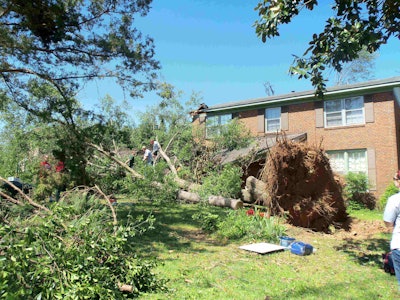
No matter where you live, you’re bound to weather some sort of storm. Here in Tuscaloosa, Alabama, we have had our fair share of tornadoes. If you live up north, you have to deal with blizzards and flooding. And for those coastal cities, hurricanes are a constant threat. While some storms leave only fallen branches, others can damage structures, cause power outages or even claim lives.
So to better understand what can be done to prevent some of these things, we chatted with Maggie Lawrence, with the Alabama Cooperative Extension System (ACES), yesterday on ValleyCrest’s and Corona Tool’s Twitter #LandscapeChat.
On the top of her list of things that cause trees to fail is root damage during the construction process. Other culprits include having a mature tree within 10 feet of a paved surface (without prior design), installing the wrong type of species for the site and having only one tree, instead of group plantings.
Also, maintain the trees and make sure they are healthy. Dead trees are much more likely to be uprooted than a well-grounded, healthy one.
Keep these things in mind when you’re installing trees on your next project. These tips won’t prevent the storms, but they can reduce the aftermath of a storm and save lives and properties.






